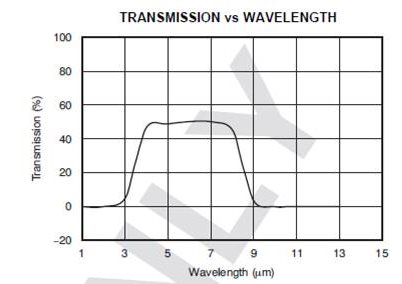I am playing around with your TMP006EVM eval kit, and have verified that the sensor sees my skin temperature as 33 C, which is the expected value. By the way, you might mention to users trying out your eval kit that the sensor noise (baseline drift) is much improved if you shield it from direct drafts (eg. put it in a plastic bag.)
Your SBOU107 "User's Guide" says "TMP006 uses IR wavelengths from 4 μm to 8 μm." Can you elaborate on this? Is the front window of the device a sharp cutoff filter passing only 4-8 um? Is there a wavelength spectrum plot available showing relative response? If I put an IR-type fresnel lens in front of it as typically used in passive IR motion detectors, will I have much lower sensitivity (since those plastics have a transmission window from 8-14 um, but block 6-8 um, and transmit about 55% from 4-6 um).
In the "Layout Guidlines" on p.6 of the same document,it states "The IR thermopile sensor in the TMP006 is as susceptible to conducted and radiant IR energy from below the sensor on the PCB as it is to the IR energy from objects in its forward-looking field of view" -so the backside is just as sensitive as the frontside (?)


